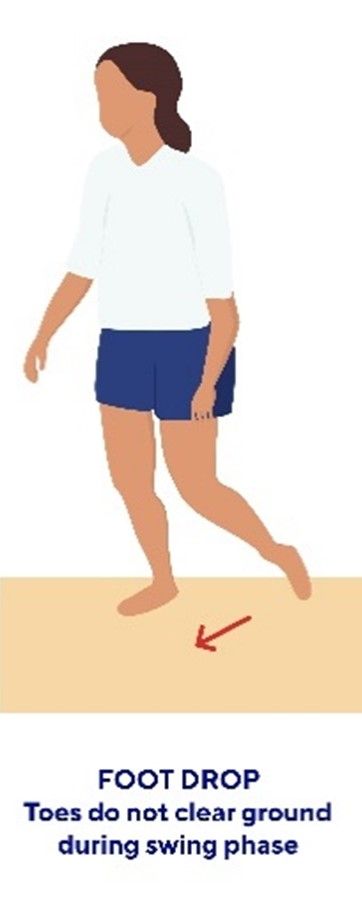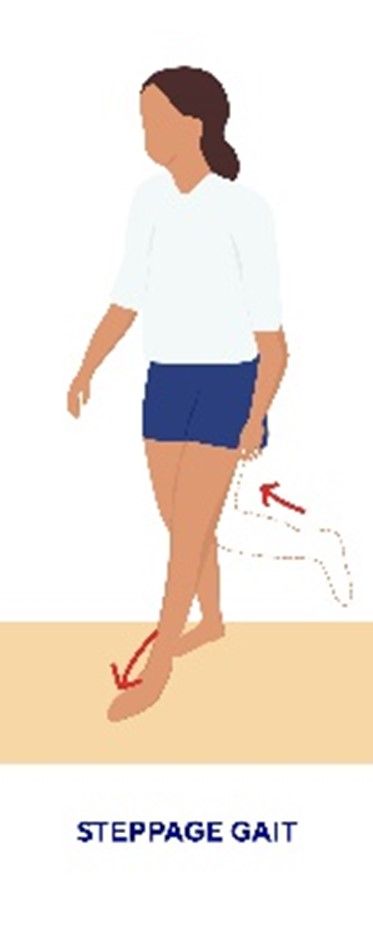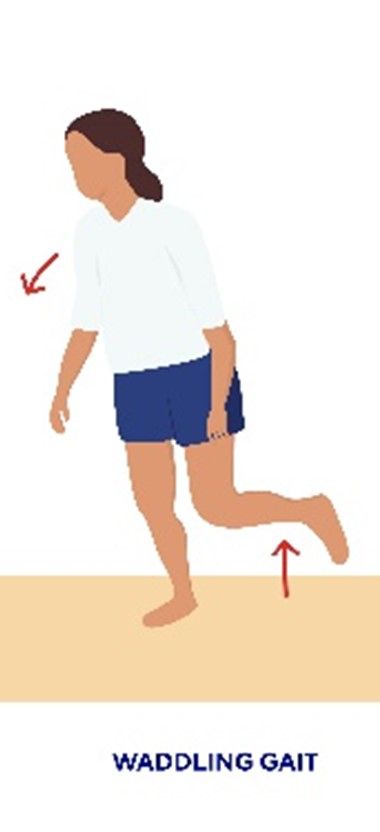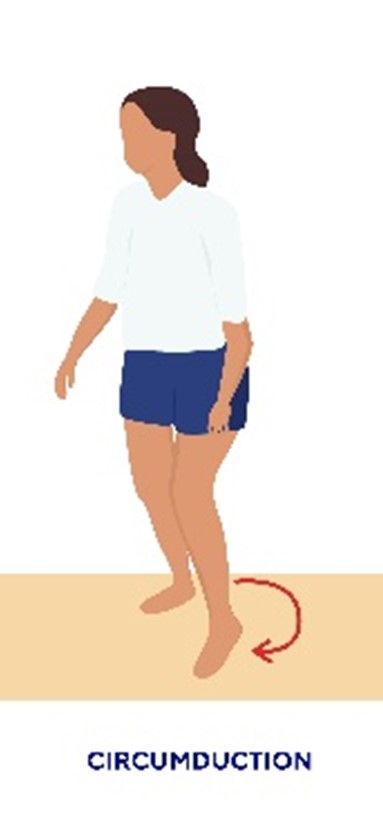Deepening on foot drop: Abnormal Gait Cycle due to Foot drop and Different methods of compensation: steppage, …
Abnormal Gait Cycle due to Foot drop
Foot drop is characterised by a significant difficulty in lifting the front part of the foot, causing it to drag or delay when walking. For more information on definition and treatment of foot drop, see our article “All about foot drop”. This condition impedes the normal gait cycle, affecting mobility and increasing the risk of falls1. For more information on Gait cycle, see our article “Deepening on foot drop: What is a gait cycle?”.
The cause of foot drop is the weakness or inability to move muscles responsible of the movement of the front part of the foot:
- Anterior tibial group muscles: problems with dorsiflexion (lifting the foot towards the shin) which is required predominantly in swing phase and loading response. Or weakness in the accessory muscles known as extensor digitorum longus, and extensor hallucis longus.
- Posterior muscle group muscles: problem of plantarflexion (action of pointing the foot), stance stability and propulsion which are required in mid to late stance.
- Or a combination of the above.
To prevent the foot from dragging on the floor during the swing phase, compensation mechanisms are put in place.
The aim of compensation is to replace the initial movement with one or more movements that enable the desired function to be performed: in this case, walking without having the foot dragging on the ground.

Different methods of compensation: steppage, …
The main compensation mechanisms used are for example steppage, wadding and circumduction. Each compensation mechanism has a different impact on walking. These different approaches aim to prevent the toes from abnormally hitting or scraping the floor while walking.
Steppage gait:
Steppage gait consists of exaggerated lifting of the thigh when walking as if climbing stairs2,3. Compared with a normal gait, he has exaggerated flexion of the hip and knee to lift the foot higher than usual during the swing phase4. This often results in your foot slapping down onto the floor each time the falling foot takes another step1.

Wadding gait:
The Wadding gait consists of a lateral rocking movement during walking. Swinging is done by bending the trunk towards the healthy side during the stance phase of the affected foot.

Circumduction:
The circumduction gait consists of keeping the leg straight when walking and swinging it to the side in a semi-circle to move forward5. The leg is swung outwards in a circular motion during the swing phase. The creation of this wide arc with the leg minimizes the risk of the toes catching on the ground.

In conclusion, our exploration of foot drop highlights its impact on the normal gait cycle and introduces compensation mechanisms such as steppage, wadding, and circumduction. Foot drop, marked by difficulty lifting the front part of the foot, disrupts walking patterns and increases the risk of falls and increases the energy expenditure to walk. Some treatments exist to compensate for walking disorders: exercises, nerve stimulation, orthopaedic devices (Ankle Foot Orthoses or AFOs) and surgery.
For more information on foot drop, and treatments see our article "All about foot drop".
For more information on AFO*s see our article "AFOs*, an ally for correcting foot drop".
*Ankle Foot Orthoses
- BANGA, Harish Kumar, BELOKAR, R. M., MADAN, R., et al. Three dimensional Gait assessments during walking of healthy people and drop foot patients. Defence Life Science Journal, 2017, vol. 2, no 1, p. 14-20.
- Bouche P. Compression and entrapment neuropathies. In: Handbook of Clinical Neurology. Elsevier; 2013:311-366. doi:10.1016/b978-0-444-52902-2.00019-9
- Chaitow L, DeLany J. Gait analysis. In: Clinical Application of Neuromuscular Techniques, Volume 2. Elsevier; 2011:61-84. doi:10.1016/b978-0-443-06815-7.00003-6
- BŁAŻKIEWICZ, Michalina, WISZOMIRSKA, Ida, KACZMARCZYK, Katarzyna, et al. Mechanisms of compensation in the gait of patients with drop foot. Clinical Biomechanics, 2017, vol. 42, p. 14-19.
- Foot Drop. American Stroke Association. https://www.strokeassociation.org/en/about-stroke/effects-of-stroke/physical-effects-of-stroke/physical-impact/foot-drop.
Published Dec 4, 2018. Accessed March 07, 2024.


